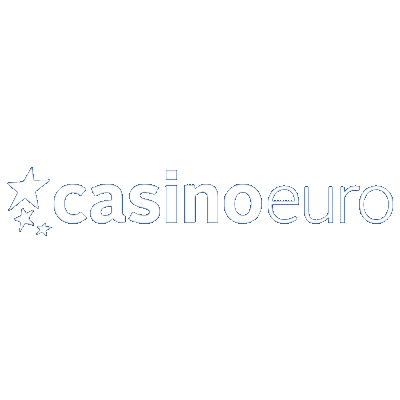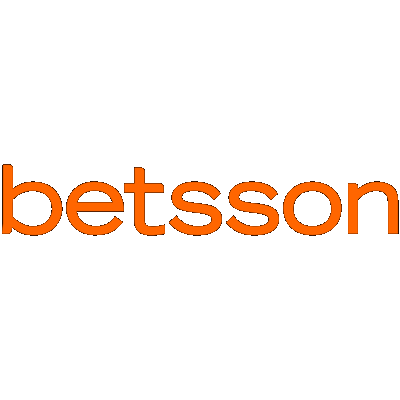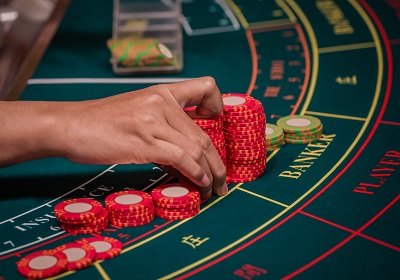
Baccarat rules
Indeed, it’s baccarat... a game with 3 versions that are well known to its fans. Punto Blanco, Chemin de Fer and Baccarat Banque. These versions differ in the various outcomes of the game. In all three, real players bet on the outcome of a game between fictitious parties: the player's win, the banker's win, or a tie. Punto Banco is the most popular version in casinos.
The origins of baccarat date back to the 15th century, when (at the end of the war and during the rule of Charles VIII.) the game spread from Italy to France. However the game only reached prominent position in 19th century in France. From there, immigrants brought it to the U.S. – specifically to Nevada – leading to the modernization of its rules to better match the American market.
What makes baccarat so popular?
- For one, there’s only a negligible house edge. The house edge here is significantly lower than in roulette and slot machines – only about 1.5%, i.e., about 3 times lower. In turn, the long-term RTP is very close to 100%.
- Baccarat is a game for everyone, in the sense that it is popular among players who like to use small bets as well as high rollers with astronomical budgets. An additional bonus of this card game is that the outcome of the game is not just about luck. You can also employ a bit of strategy, depending on the game variant.
What are the game’s basic rules?
- Matches are played using 4, 6 or 8 French decks without jokers (1 deck = 52 pcs).
- A match can have up to 14 players, but can also only feature a single player against the casino.
- Players bet on one out of three possible outcomes: the player wins - Punto, the banker wins - Banco, a tie - Stand-off. The result is decided after dealing 2 or 3 cards to both fictitious parties.
- Card values: 2-9 have their listed value, 10/J/Q/K have a value of 0, A has a value of 1.
- All numbers are counted modulo 10. This applies under all circumstances and means that only the rightmost digit counts. Example: (6+7=13=3, 3+7+10=20=0, 2+4=6, J+4=4).
- Baccarat actually means bankruptcy, and in this game it is represented by the number 0 (from the Italian word baccara, meaning ”zero”). The highest possible value you can get is 9 (La Grande, meaning “big sum” in French). An 8 is called La Petite (“small sum”). In any case, both sides end up with a value between 0 and 9.
How does the game work?
The fictitious player and banker receive 2 cards from the dealer. Sometimes they later receive a third card, depending on the final value of the cards and the rules of individual versions of baccarat. These determine when and whether a third card is dealt. The fictitious player is the first to end the round. The real players make bets on whether the game ends with a tie, a win for the banker, or a win for the player.
In Punto Banco, the most popular version of the game, the outcome is based on the following rules:
- Natural win – if the sum of both pairs of cards for the player and banker is 8 or 9, the given round ends based on the scores and IT IS NOT NECESSARY TO DEAL A 3RD CARD for any of the parties.
- Otherwise, the outcome is calculated based on a table, always beginning with the player.
- Rules for the player: If the player’s sum is between 0 and 5, he receives a 3rd card; however, if his sum is 6 or 7, he STANDS.
- Rules for the banker: If the player stands (meaning he holds 2 cards), the banker follows the same rules as the player. Meaning that if his sum is between 0 and 5, he receives a 3rd card, and otherwise he STANDS.
Rules for the banker if the player has 3 cards:
- If the banker’s sum is 0-2, then he receives a 3rd card, regardless of the player’s 3rd card.
- If the banker’s sum is 3, then he receives a 3rd card only if the player’s 3rd card was an 8.
- If the banker’s sum is 4, then he receives a 3rd card only if the player’s 3rd card was a 2, 3, 4, 5, 6 or 7.
- If the banker’s sum is 5, then he receives a 3rd card only if the player’s 3rd card was a 4, 5, 6 or 7.
- If the banker’s sum is 6, then he receives a 3rd card only if the player’s 3rd card was a 6 or 7.
- If the banker’s sum is 7, then he STANDS.
The croupier/dealer then announces one of the three outcomes of the game.
What are the possible outcomes of a game of baccarat?
- If a real player wins after betting on the player – Punto, the winner receives an "even money” payout, meaning that they get double their initial bet.
- If a real player wins after betting on the banker – Banco, the winner also receives an “even money” payout, i.e., the initial bet + the net win; however, here the casino applies a 5% commission fee from the bet, which reduces the net win to 95% times the bet.
- If a real player wins after betting on a TIE, players usually receive 8 or 9 times their bet (depending on the location of the casino; for instance, it is 9:1 in the UK).
Best value for players
Punto Banco baccarat is known for having the smallest house edge – meaning that the casino’s advantage is smallest among all table games, and this also holds for online casinos. So, what’s the house edge for the 3 outcomes?
- The house edge for betting on the player is 1.24%.
- The house edge for betting on the banker is only 1.06%.
- Finally, the house edge for a tie is 14.4% (in case of a 8:1 rate) or 4.85% (in case of a 9:1 rate).
When playing baccarat, we recommend NOT BETTING ON TIES. While the outcome offers the highest payouts, the probability of getting a TIE in the long term is only slightly above 10.5%. Meaning that payout rate below 9.5:1 are not advantageous for the player.
On the other hand, betting on the player or the banker is up to three times more advantageous than similar bets in games like blackjack or roulette, and only give the casino a minuscule house edge. This is a major factor why baccarat is so popular and many casinos require fairly large minimum bets to play the game. In brick-and-mortar casinos in the U.S., these could even be hundreds of dollars.
As for the other versions of baccarat, Chemin de Fer and Baccarat Banque, these require some additional strategy, since in some cases it is up to the real players whether the fictitious player and/or banker get to draw a third card.
If you want to try out this popular game, perhaps just to understand how it's played, we certainly recommend to do so and highly recommend it. Every good online casino offers baccarat, and most also allow players to try the game out completely for free.
What do you bet on in Baccarat?
Which Baccarat version is most common?
Why is Baccarat so popular?
When is the third card drawn?
Is betting on a tie a good idea?

The best online casinos

1. Betsafe
Betsafe was created in 2006 and today is part of the well-respected Betsson Group, based in Sweden. Its focus is to target rather more experienced players. And it has plenty of things to capture your attention – but perhaps the greatest eye-catchers include a gigantic range of games (e.g., over 1000 online slot machines) and an emphasis on security and high-quality support.

2. Mr Green
The wide range of exciting casino games includes various versions of roulette and blackjack, including games with live croupiers, video poker, bingo and of course, an infinite number of slot machines.

3. CasinoEuro
European-licensed casino with a long history. One of the best-known and well-trusted casino portals in Europe.

